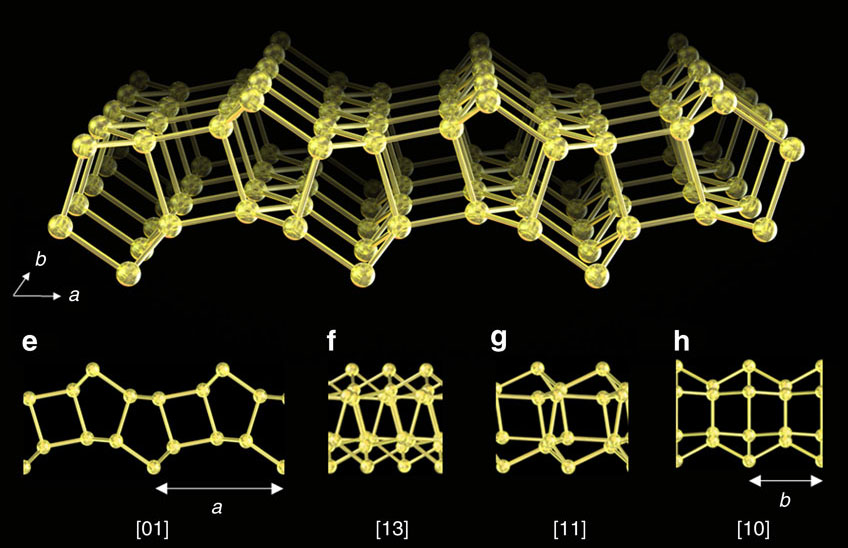Research Abstract
単層シリセンから二層シリセンへの相変態とその構造解析
Monolayer-to-bilayer transformation of silicenes and their structural analysis
2016年2月5日 Nature Communications 7 : 10657 doi: 10.1038/ncomms10657

シリセンは、グラフェンのように二次元ハニカムネットワーク(蜂の巣格子)構造をとるケイ素(シリコン)原子で構成されており、次世代エレクトロニクスの主要材料として大きな可能性を秘めている。しかし、シリセンは大気条件下で不安定であるため、実用化が困難である。今回我々は、カルシウムがインターカレートした単層シリセン(CaSi2)をBF4-系イオン液体で処理した後に、3種類の二層シリセンが形成されることを報告する。得られた二層シリセンは、CaF2やCaSi2の平面結晶に挟まれた状態で存在する。3種類の二層シリセンのうちの1種は、4員環、5員環、6員環のsp3ケイ素環で構成された新しいケイ素同素体である。この二層シリセン構造中のケイ素の不飽和結合(ダングリングボンド)の数は、単層シリセンと比較して低減されている。加えて、ゼロギャップ半導体の単層シリセンとは異なり、二層シリセンのバンドギャップは1.08 eVに開いた間接遷移型である。
Ritsuko Yaokawa, Tetsu Ohsuna, Tetsuya Morishita, Yuichiro Hayasaka, Michelle J. S. Spencer & Hideyuki Nakano
Corresponding Authors
Silicene, a two-dimensional honeycomb network of silicon atoms like graphene, holds great potential as a key material in the next generation of electronics; however, its use in more demanding applications is prevented because of its instability under ambient conditions. Here we report three types of bilayer silicenes that form after treating calcium-intercalated monolayer silicene (CaSi2) with a BF4− -based ionic liquid. The bilayer silicenes that are obtained are sandwiched between planar crystals of CaF2 and/or CaSi2, with one of the bilayer silicenes being a new allotrope of silicon, containing four-, five- and six-membered sp3 silicon rings. The number of unsaturated silicon bonds in the structure is reduced compared with monolayer silicene. Additionally, the bandgap opens to 1.08 eV and is indirect; this is in contrast to monolayer silicene which is a zero-gap semiconductor.

